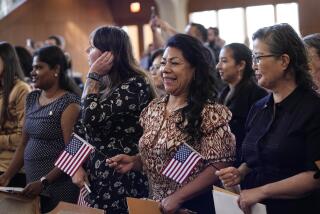American moms set new record for twin births, CDC says

American moms gave birth to twins at a record rate in 2014, according to new data from the Centers for Disease Control and Prevention.
They say good things come in pairs, and that’s increasingly true for American babies, new government data show.
The U.S. twinning rate hit a record last year, with 33.9 out of every 1,000 births involving twins. That increase from the 2013 rate of 33.7 per 1,000 births isn’t big enough to be statistically significant, but it did qualify as “a new high for the nation,” according to a report from the National Center for Health Statistics.
Among all of those twins, 78,788 were born to white women, 23,546 were born to black women and 22,051 were born to Latinas.
Join the conversation on Facebook >>
While the twinning rate set a record in 2014, the total number of twin births was merely the fifth highest on record. Altogether, 135,336 twins were born in the U.S. last year. That’s 2.3% higher than in 2013, but 2.6% lower than the all-time high of 138,961 twin births, set in 2007. That year, the twinning rate was 32.2 per 1,000 births.
The rise in twin births can be traced to twin trends: American women are waiting longer to have babies, and those who use in vitro fertilization are being more conservative with their treatments.
The average age of first-time moms continued to rise in 2014, setting a new U.S. record at 26.4 years. Overall, the birth rate for women in their teens and early 20s fell last year, while the birth rate for women ages 25 to 44 rose.
Although fertility declines as women get older, they are more likely to have fraternal twins. Scientists believe that as the ovaries run low on eggs, the body responds by releasing higher levels of a follicle-stimulating hormone. That, in turn, makes the release of multiple eggs more likely. If two or more are of good quality, fraternal twins (or triplets, or even higher order multiples) can be the result.
(Identical twins, on the other hand, occur when a single fertilized egg splits into two. There is no link between a mother’s age and her odds of conceiving identical twins.)
Meanwhile, as in vitro fertilization has become more successful, doctors have been encouraging women to transfer fewer embryos to their wombs. The Society for Assisted Reproduction Technology advises many patients with a good prognosis for a successful pregnancy to transfer no more than two embryos at a time. (Only women who are 38 or older should even consider transferring more than two embryos if they are just getting started with IVF, the society says.)
As a result, the birth rate for twins is up 79% since 1980, while the birth rate for triplets and higher-order multiples has declined 41% since peaking in 1998, according to the report. In 2014, 113.5 out of every 100,000 births involved higher-order multiples, the lowest it’s been in 20 years.
Altogether, 4,526 babies were born as triplets, quadruplets or higher-order multiples in 2014. That’s the lowest figure since 1993, the report said.
See the most-read stories in Science this hour >>
With complete data from all 50 states, the District of Columbia and the U.S. territories of Puerto Rico, the Virgin Islands, Guam, American Samoa and the Northern Marianas Islands, the National Center for Health Statistics counted a total of 3,988,076 babies born in the country in 2014. That’s a 1% increase from 2013.
Overall, the nation’s fertility rate was 62.9 births per 1,000 women between the ages of 15 and 44. That’s up slightly from 62.5 births per 1,000 women of childbearing age in 2013.
Births to white, black and Latina women all rose by 1%, according to the report. They jumped 6% for Asian American women and fell 2% for Native American women.
The birth rate for teens ages 15 to 19 dropped 9% between 2013 and 2014, with 24.2 births per 1,000 women in this age group. Women ages 20 to 24 also saw their birth rate decline 2%, to 79 births per 1,000 women in 2014. Both of those were record lows, according to the report.
The birth rate for 25- to 29-year-olds was essentially flat, rising from 105.5 to 105.8 births per 1,000 women in this age group. However, the birth rate rose 3% for women in their 30s -- in 2014, it was 100.8 per 1,000 women ages 30 to 34 and 51 per 1,000 women ages 35 to 39.
Women in their early 40s registered a slight increase in 2014, with 10.6 births per 1,000 women ages 40 to 44. The birth rate for women past their 45th birthday was unchanged.
The total fertility rate -- an estimate of all the births that a group of 1,000 women would have over their lifetimes -- rose to 1,862.5 in 2014. though higher than in 2013, it was still well below the 2,100 births per 1,000 women that demographers say are necessary for a generation to replace itself. The total fertility rate has been below this threshold since 1971.
The National Center for Health Statistics is part of the Centers for Disease Control and Prevention.
Follow me on Twitter @LATkarenkaplan and “like” Los Angeles Times Science & Health on Facebook
MORE SCIENCE NEWS
Antidepressant use during pregnancy linked to autism, study says
What constitutes brain death? Depends on which hospital you’re in, study finds
More than 90% of people who overdosed on prescription painkillers can still get refills, study says







